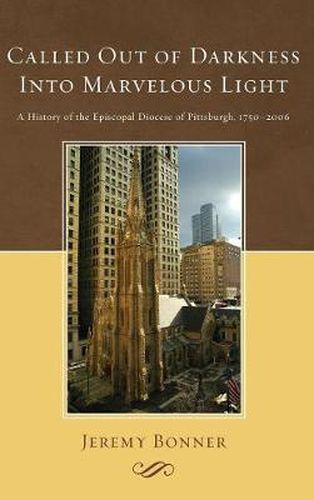Readings Newsletter
Become a Readings Member to make your shopping experience even easier.
Sign in or sign up for free!
You’re not far away from qualifying for FREE standard shipping within Australia
You’ve qualified for FREE standard shipping within Australia
The cart is loading…






This title is printed to order. This book may have been self-published. If so, we cannot guarantee the quality of the content. In the main most books will have gone through the editing process however some may not. We therefore suggest that you be aware of this before ordering this book. If in doubt check either the author or publisher’s details as we are unable to accept any returns unless they are faulty. Please contact us if you have any questions.
In the conflicted world that is today’s Episcopal Church, the diocese of Pittsburgh stands both as a symbol of dissent and schism to the liberal majority within the American Church and as a beacon of light and hope to conservative Anglicans across the United States. Set in the unlikely surroundings of America’s Rust Belt, Pittsburgh’s Episcopalians have over the past half century undergone a dramatic reordering of priorities to embrace a novel–though hardly unprecedented–vision of Anglican confessionalism. Called out of Darkness into Marvelous Light traces the development of an Anglican presence in western Pennsylvania from the missionary activity of the late eighteenth century through the triumphs of post-Civil War Anglo-Catholicism and the first stirrings of the Social Gospel, to the unprecedented religious revival of the 1950s. Championed by such men as Bishop Austin Pardue and Samuel Moor Shoemaker, the founder of the Pittsburgh Experiment, a prayer-centered spirituality developed in the Pittsburgh diocese and brought a generation of active evangelicals to the region during the 1960s and 1970s. The founding of Trinity Episcopal School for Ministry in the mid-1970s consolidated the evangelical presence in the diocese and provoked a commitment to spiritual renewal that sat uneasily with many in the wider Episcopal Church. Grounded in local research, this study seeks to explore the process by which Pittsburgh acquired its present evangelical identity and to reveal the increasingly intricate web of relationships that it now enjoys beyond America’s borders.
$9.00 standard shipping within Australia
FREE standard shipping within Australia for orders over $100.00
Express & International shipping calculated at checkout
This title is printed to order. This book may have been self-published. If so, we cannot guarantee the quality of the content. In the main most books will have gone through the editing process however some may not. We therefore suggest that you be aware of this before ordering this book. If in doubt check either the author or publisher’s details as we are unable to accept any returns unless they are faulty. Please contact us if you have any questions.
In the conflicted world that is today’s Episcopal Church, the diocese of Pittsburgh stands both as a symbol of dissent and schism to the liberal majority within the American Church and as a beacon of light and hope to conservative Anglicans across the United States. Set in the unlikely surroundings of America’s Rust Belt, Pittsburgh’s Episcopalians have over the past half century undergone a dramatic reordering of priorities to embrace a novel–though hardly unprecedented–vision of Anglican confessionalism. Called out of Darkness into Marvelous Light traces the development of an Anglican presence in western Pennsylvania from the missionary activity of the late eighteenth century through the triumphs of post-Civil War Anglo-Catholicism and the first stirrings of the Social Gospel, to the unprecedented religious revival of the 1950s. Championed by such men as Bishop Austin Pardue and Samuel Moor Shoemaker, the founder of the Pittsburgh Experiment, a prayer-centered spirituality developed in the Pittsburgh diocese and brought a generation of active evangelicals to the region during the 1960s and 1970s. The founding of Trinity Episcopal School for Ministry in the mid-1970s consolidated the evangelical presence in the diocese and provoked a commitment to spiritual renewal that sat uneasily with many in the wider Episcopal Church. Grounded in local research, this study seeks to explore the process by which Pittsburgh acquired its present evangelical identity and to reveal the increasingly intricate web of relationships that it now enjoys beyond America’s borders.